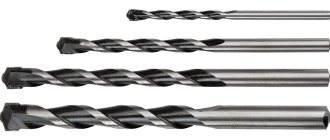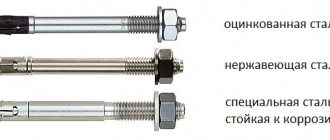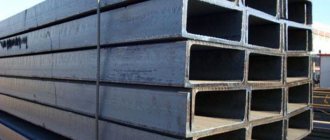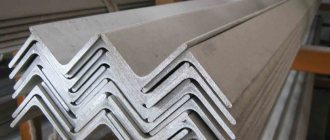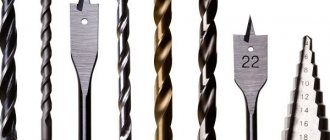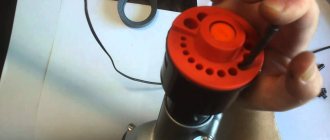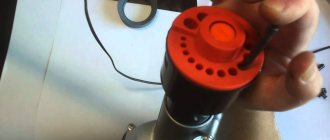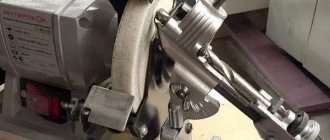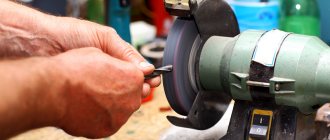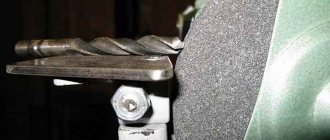Tubular diamond drills
The tool, according to GOST, is intended for processing and forming holes in concrete and reinforced concrete structures.
In practice, the drill is used to work with metals and alloys of increased hardness, as well as when drilling hard and brittle materials. Use in the latter case is justified if you need to drill holes of large diameter. A tubular drill consists of two elements:
- diamond ring - a ring crown with a diamond-bearing layer on the edge, which represents the cutting part of the tool;
- extension - a cylindrical body onto which the ring is attached. The extension can be provided with side openings for solids removal and cooling.
The main difference between a tubular drill and options with other shank shapes is the reduction in axial load. This feature reduces wear, and therefore the consumption of diamonds, and increases productivity.
Tubular abrasive drilling. Principles
Seventh experience, May 13, 2017
Granite, solid tube and corundum from crushed cutting disc.
This is a successful attempt to restore the mastery of optimal supply of corundum abrasive, forgotten for seven years. The rotor and tube were used the same as a year ago.
Then the experiment was carried out with the aim of showing for the first time on video the technique of drilling hard rocks of stone with a reconstructed brace. But a year ago it was successfully failed by destroying the traditional “Egyptian” grooves that had begun to appear, although it proved to someone the ability to easily drill granite with a copper tube with an abrasive.
But our goal is to understand why the Egyptians got exactly the holes they did, what kind of holes they got, and what specific conditions had to be observed. The mechanism and physics of the appearance of grooves were deciphered by us a long time ago, but the subtleties of the work were not yet completely clear. It was necessary to finally establish in the understanding of how the workers behaved, that as a result the holes were obtained with characteristic grooves (and this can be judged by the condition of the walls of a large number, for example, hub holes in the granite lintels of Egypt). To clarify these subtleties, Nikolai had to conduct more than two dozen experiments in preparation for new filming until the conditions for the formation of grooves became clear and stable repeatability of the results was achieved.
This time the assistant fed the abrasive under the strict supervision of Nikolai, who exclusively rotated the rotary with his own hands. Some rocking of the axis of the rotor with unskilled hands again threatened to grind off the perfectly produced “Egyptian” grooves, even with the correct supply of abrasive.
The moment when a new dose of corundum abrasive should be applied was determined by the “sound of the process.” It became quiet, the tube rotates in the annular cut of the sample with a slight hiss - it’s time to add abrasive.
The dose is a lump of wet corundum with a “diameter” of four to five millimeters. The correct dose volume was gradually selected experimentally: it should ensure efficient operation of the drill and in no case clog the gaps, complicating rotation and destroying the grooves.
During the experiment, abrasive was added on the flattened tip of the knitting needle directly into the gap between the tube and the wall of the hole. At the moment the dose was added, the sound changed, turning into a characteristic dryish grinding sound. Within a minute or two, the grinding turns into a hiss again, and that means it’s time to add a new lump.
Specifications
- Case material - in the manufacture of the extension, steel grade 40X is used, for the case - 20, 30, 35.
- Layer material – diamond layer can be continuous – C1, and discontinuous – C2. To form it, technical diamond powders of different brands are used. In instruments of class C2, the use of synthetic mixtures is allowed. The marking necessarily includes information about the nature of the cutting layer.
- Durability is determined by the abrasion resistance of the layer and the material being processed. The durability is influenced by the way the cutting edge is formed: a layer applied by electroplating provides a diamond density almost 16 times higher than when sintered. Accordingly, such a tool will last much longer.
The life of the drill - the time of abrasion of the diamond layer - is indicated by the product label and its color. Drills for hand tools are marked blue, for machine tools – black. In general, the working life with a material of the same hardness for a manual device is half as long. For ceramics, for example, it is 70 and 120 for hand and machine drills, respectively. For concrete - 12 and 25.
- Edge thickness – determines the thinness of the cut. For glass it should be 0.4–1 mm, for natural stone – up to 4 mm.
- The height of the diamond layer is up to 10 mm.
- The diameter of the working crown is regulated by GOST 24638-85, the outer diameter ranges from 20 to 215 mm.
Types of Diamond Drills
The tool is classified according to the following criteria:
- manufacturing method;
- the shape of the working part;
- the material with which he can work;
- diameter;
- designs;
- cutting method.
Electroplating and sintering are the main methods for making diamond drill bits. The first method, i.e., spraying, produces products with a cutting part of a conical type and a tubular shape of a complex configuration of any diameter. Their resistance to wear is lower than that of cutting tools made by sintering. In the second method, the product is manufactured using powder metallurgy, which has one drawback - the impossibility of manufacturing small-diameter tools due to the technological complexity of the process.
The shape of the working surface can be of the following types:
- spear-shaped or feather-shaped;
- conical;
- spherical;
- cylindrical.
A product with a cylindrical working part can be tubular or ring-shaped. The tubular diamond drill has a cylindrical body made of high-quality steel (high-speed, carbon, high-alloy), and its end is sprayed with powder of different fractions. Such instruments with glass and ceramics work with cooling: a special liquid (coolant) or water is supplied to the working part.
Diamond core drill comes in different types. Diamond chips or powder can be applied in a continuous layer to a certain height or on segments located along the circumference with a certain pitch. There can be up to 14 of them. Drills of this type are produced with a diameter of 32 to 350 mm with a diamond layer height of up to 10 mm.
Manufacturers produce drills that can work with many materials (universal) or for a specific type. Diamond drills for metal, marble, glass, porcelain stoneware, etc. are available in the retail chain. Therefore, when selecting a product, you need to know what material it will work in, and you need to pay attention to this feature, as well as using what it will rotate and at what speed. For rotation, use a drill, screwdriver, electric screwdriver or machines that have an appropriately shaped chuck for securing them.
The rotation speed depends on the diameter of the drill used and the material in which the operation is performed. Approximate data is shown in the table.
| Diameter, mm | Rotation speed, rpm |
| 100÷350 | 200÷500 |
| 50÷100 | 500÷1200 |
| 25÷50 | 1200÷2500 |
| 15÷25 | 2000÷4500 |
| 8÷15 | 2500÷6000 |
| 3÷8 | 3000÷12000 |
| 1÷3 | 6000÷18000 |
Scope of application
Diamond drilling and drilling are among the most universal processing methods. Firstly, thanks to the material of the cutting edge: diamond has maximum hardness, therefore metal alloys and stones are not an obstacle for it.
The photo shows the drilling process with a tubular drill
Minimum processing area: the tubular drill does not touch the core of the hole, but only cuts through the material to the appropriate depth. This significantly reduces energy consumption and completely eliminates damage to the material. Tubular diamond drill bits work well for plexiglass. They easily cut into the viscous polymer and do not get stuck in it, which gives them an advantage when working with this material.
Diamond coated tubular drills
Diamond spraying of tubular drills - technical powders, and small parts of diamond. GOST pays special attention to the fact that the crystals on the edge must be opened. Diamond hardness varies depending on direction - this is a property of the crystal structure. The cutting edges should be among the hardest. During operation, they become “greasy”, that is, they are replaced by non-solid edges. Therefore, the layer is periodically “opened”: some abrasive material is drilled using the dry method.
The diamond layer can be restored ; it is cheaper than purchasing a new tool. The layer is formed using the galvanic method or the diffuse-vacuum method.
Advantage
- According to GOST, the standard of their effectiveness is the ability to work with concrete and reinforced concrete at a specific pressure of up to 5 MPa.
- They are no less in demand when working with optical glass and any other operations where high accuracy of holes is required. The continuous layer allows for the cleanest, most accurate hole possible without damaging the fragile material.
- Economical - when drilling using the conventional method, the tool removes the core material and processes it into dust and chips. A tubular drill allows you to cut through material without cutting, and this process is much easier and requires less energy.
- The same feature allows you to work with solid material at low speeds - from 400 to 1000 rpm. Which again reduces costs: high drive power and a special cooling and blowing system are not required.
- When cutting reinforced concrete structures and solid masses of concrete, there is no need to use the rotary impact method. You need to pay attention to this point when choosing a hand tool: a diamond drill can only be used on those hammer drills where the impact option is disabled.
- The material is not damaged during through drilling, since the tool does not create a high load.
- There is no large amount of dust and chips.
Features of use
The main thing when working with diamond drills is to prevent them from overheating. Therefore, it is recommended that when performing a drilling operation, perform it at minimum speed and periodically dip it in water. There are recommendations for using tools with one or another surface shape. For example, drilling holes in ceramics and glass must be done using a tool of tubular design. It is also necessary to carry out the drilling process correctly. It begins by setting the drill at a right angle. Work must be carried out without impact. It is recommended to use specially designed devices or jigs to facilitate the centering process.
Specifications
To the technical parameters of the tool, the following segment characteristics are added:
- length of segments (mm);
- thickness (mm);
- number of segments;
- the distance between them is pitch (mm).
If we are talking about dry cutters, that is, tools for dry drilling, then the number of holes for cooling is indicated.
Using coolant when drilling significantly extends the life of the tool. Thus, up to 160 holes can be made in porcelain stoneware using the dry method, and up to 350 with water supply.
Scope of application
- Construction work – for drilling concrete and reinforced concrete structures, except the most durable ones. As well as brick, foam concrete, aerated concrete, and other things.
- Rolled metal – drilling of sheet material made of metals and alloys.
- Laying pipelines - drilling connecting holes, drilling asphalt, and so on.
- Finishing work - segmental crowns are used for drilling slabs of natural and artificial stone, ceramics, glass, even plastics and plexiglass.
- For household tools, segment drills are almost always used - they are cheaper, provide a sufficient accuracy class, and wear is minimal due to the small volume of household work.
Segmented diamond drill bf 600
The rotation speed, the required power of the device, and the purpose of the drill depend on the parameters of the segment. Premium drills from the BF series are used for cutting concrete, reinforced structures, brick, stone - artificial and natural.
Segments of the BF 600 series are distinguished by their highest height - 10 mm with backing, and maximum layer density. The drill is used in all construction work, from drilling acrylic glass to processing concrete with strong reinforcement, as well as with hard fillers.
- Drilling speed – up to 2.4 cm/min.
- Passage resource – at least 8.5 m.
- The required power of the device is 2.4–2.5 kW.
Advantage
The main advantage of a segmented tool compared to crowns with a continuous diamond layer is lower cost with high versatility.
The drill is not recommended for use on concrete with high specific density, since here the wear of the cutting layer will be unreasonably high. But in all other cases its use is cost-effective.
It is much easier to restore a discontinuous layer: the segments are produced as an independent product. Some, like Adele's BF 600 series, have a welding backing.
What is the best tubular drill bit to use for glass?
To make large enough holes in glass or ceramics, it is necessary to use special tubular drills. Similar tools are used in industrial processing. The tubular glass drill is distinguished not only by its special shape - its working cutting layer is made of technical diamonds and is tightly attached to the steel base using the thermal sintering process.
Before the first use, such equipment must be cleaned with an abrasive stone from the cutting edge in order to expose the diamond layer - a similar procedure is done for special machine drills and countersinks. Diamond-coated tubular drills are best suited for such work - unlike carbide drills, they do not chip on the back side of the material being processed.
